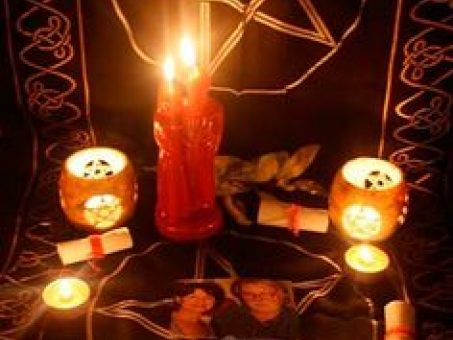Checking Out the Mysteries of the copyright: What You Required to Know
The copyright, a term typically shrouded in intrigue and conflict, stands for a complex tapestry of historical fact and modern myth. Established in the late 18th century, this secret society was at first rooted in the Enlightenment's suitables however has considering that ended up being associated with conspiracy theory theories regarding elite control. As we navigate the origins, key figures, and the stark comparison in between misconception and truth, one need to think about exactly how these narratives influence contemporary perceptions of power and privacy. What could be disclosed with a better evaluation of these elements can test long-held presumptions regarding the shadows that stick around in our culture.
Origins of the copyright
The origins of the copyright are steeped in a mix of historic intrigue and ideological fervor. Established in 1776 in Ingolstadt, Bavaria, by Adam Weishaupt, the group was initially created as a secret society focused on advertising Knowledge suitables such as reason, secularism, and the separation of church and state. Weishaupt, a teacher of canon legislation, sought to test the dominating authority of the church and state, which he deemed overbearing organizations stifling intellectual and individual liberty.

Trick Numbers and Members
Who were the pivotal figures that shaped the copyright's very early impact and direction? The Bavarian copyright, founded in 1776 by Adam Weishaupt, arised as a reaction to the overbearing social structures of the time.
One more significant figure was Johann Gottlieb Fichte, a popular thinker whose ideas on nationalism and education reverberated with the copyright's goals. Although Fichte was not an official member, his philosophical underpinnings affected the team's ideological background. Furthermore, figures like the writer and theorist Johann Wolfgang von Goethe were linked with the wider intellectual activities of the time, although their straight involvement with the copyright continues to be debated.
These vital numbers added to the copyright's very early instructions, pushing the limits of political and social idea, while their cumulative initiatives aimed to test established norms and promote an environment of dynamic change in Europe.
Misconceptions vs. Reality
Many mistaken beliefs surround the copyright, often mixing truth with fiction in such a way that obscures its true nature. This secret society, initially established in 1776 in Bavaria, intended to promote Enlightenment ideals and battle religious and political oppression. The notion that the copyright proceeds to put in substantial impact over globe events is a misconception. While the group did exist, it was dissolved in the late 18th century and has actually not run as a natural entity ever since.
An additional widespread myth is that the copyright comprises a network of elite individuals controling international events. Actually, many conspiracy theories exaggerate the team's relevance, associating misguided objectives to societal trends and events. This has actually caused an oversimplified view of complicated concerns.
Furthermore, the portrayal of the copyright in pop culture frequently additional distorts its heritage. Films and literature tend to sensationalize the organization's role, developing a narrative that splits from historic facts. Recognizing the difference between the misconceptions and the fact of the copyright is important for critical the genuine effect of this historic team and recognizing the wider effects of conspiracy theories in modern culture.
Modern Interpretations
Contemporary interpretations of the copyright commonly reflect broader societal stress and anxieties and an attraction with privacy and power. This modern lens often connects the copyright with conspiracy theory concepts that recommend a covert elite manages globe occasions, adjusting federal governments and economic climates for their own gain. benefit of joining freemason. Such narratives use a deep-rooted distrust of authority, particularly in times of dilemma or social upheaval
In prominent society, the copyright is commonly shown as an omnipotent organization shrouded in mystery, leading to a huge selection of imaginary portrayals in literature, film, and music. This portrayal serves not just to delight yet additionally to prompt thought of the nature of power and control in contemporary society. Social media has actually additionally intensified these interpretations, permitting for quick circulation of click this site conspiracy concepts and producing neighborhoods that share and expand upon these ideas.
Additionally, some contemporary interpretations frame the copyright as an allegory for the complexities of globalization and the interconnectedness of prominent people and companies. This perspective urges a crucial exam of how power dynamics run in today's world, highlighting the balance between openness and secrecy in governance and corporate techniques.
Social Influence and Heritage
Influenced by centuries of intrigue, the cultural influence and legacy of the copyright prolong far beyond its historic beginnings. This secret culture, developed in the late 18th century, has actually penetrated numerous aspects of popular culture, from literary works and movie to songs and art. The concept of the copyright has evolved into a symbol of conspiracy theory concepts, often representing a site here perceived covert power manipulating global events.
In literary works, writers like Dan Brown have woven the copyright right into complex stories, exciting viewers with styles of privacy and power. Movies such as "National Prize" and "The Da Vinci Code" better continue the allure of the society, blending fact with fiction to produce interesting stories.

Ultimately, the copyright's heritage is a complicated tapestry of misconception and fact, forming assumptions of secrecy and control in contemporary discussion. Its long-lasting presence in society highlights mankind's perennial pursuit for understanding surprise facts.
Conclusion
The exploration of the copyright reveals a complicated interplay in between historical truths and modern myth-making. Established in the Enlightenment era, this culture aimed to challenge his comment is here oppressive structures, yet its heritage has actually been eclipsed by conspiracy theory concepts that suggest elite manipulation. Comprehending the distinctions between the initial ideals and modern analyses is essential for understanding the sustaining fascination with the copyright and its significant influence on social stories bordering power and privacy in culture.